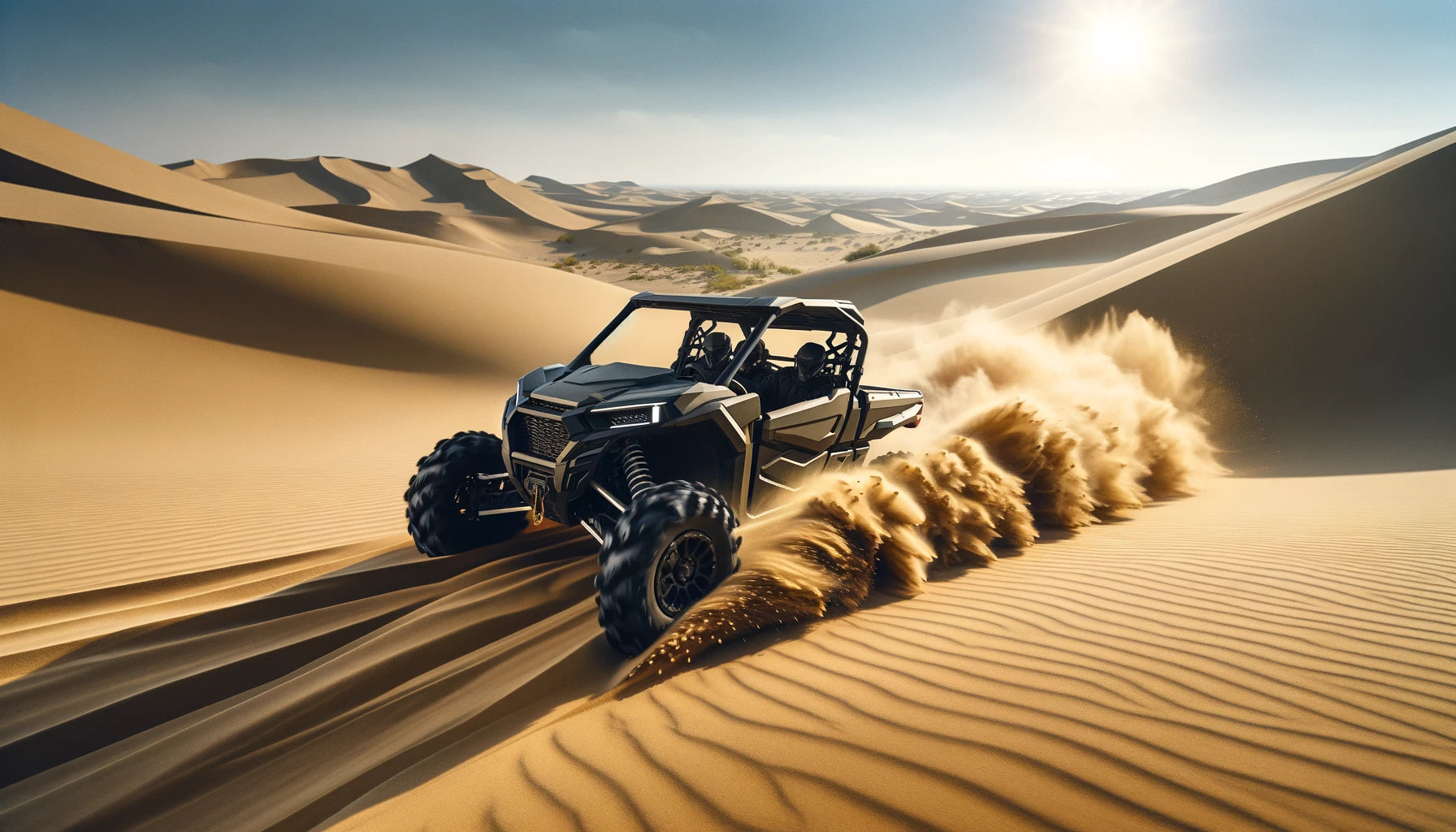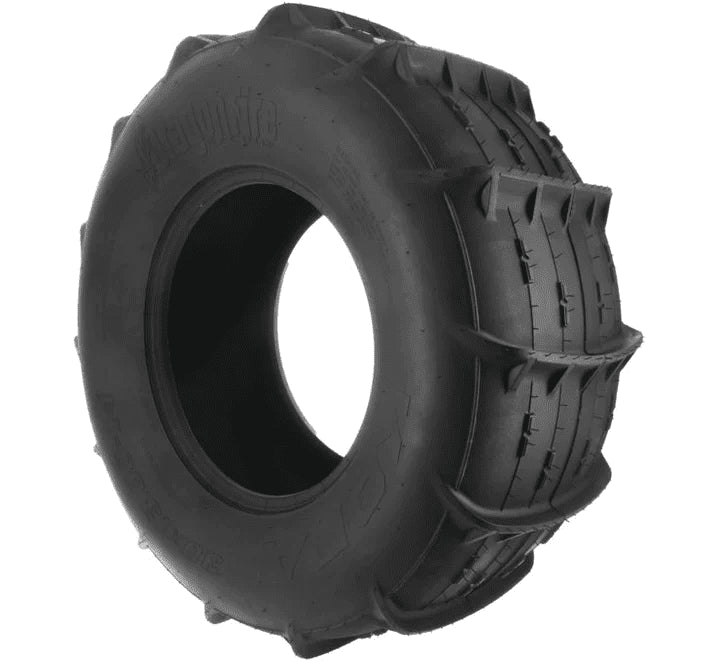UTV Sand Kit Buyers Guide: Essential Picks for the Perfect Dune Experience
Essential Insights on Sand Riding Preparation
Preparing for a ride in the dunes demands more than just desire. One must ensure their utility terrain vehicle (UTV) is properly equipped to take on such a challenge.
Performance factors like horsepower and knowledge of tire pressure adjustment are crucial. Along with having essential gear such as sand-specific tires and safety equipment.
Sand dunes offer an exhilarating experience, combining the thrill of speed with the serenity of vast, open spaces. However, this environment puts extra strain on both the vehicle's powertrain and suspension system. Hence, optimal preparation is key to a delightful yet secure dune adventure.
Pre-Ride Checkup and Adjustments
Before setting off, one should perform several maintenance and upgrade tasks:
- Replace engine oil to ensure optimal engine performance.
- Clean or substitute the air filter for better airflow.
- Review the Continuously Variable Transmission (CVT) belt, coolant levels, and suspension system.
- Opt for high-quality sand tires for improved handling and traction.
- Mount a visible whip or safety flag on the vehicle for increased visibility to others.
Understanding Sand Tires
Sand tires are distinct from regular all-terrain tires, offering specific features designed for sandy terrains such as:
- Front Tires: Essential for steering capability.
- Rear Paddles: Provide the necessary acceleration and traction, facilitating swift movement and speed enhancement over sand.
Selecting the Ideal Sand Tire
The choice of sand tire depends on several variables:
- Driving Style: The driver's aggression and speed can determine the tire requirements.
- Vehicle Model: Different UTV models may need various tire setups, considering their age and engine capacity.
- Terrain Type: Adapting to the specific sand conditions—whether fine or coarse, wet or dry—is necessary.

Sand Tire Types: Molded vs. Buffed
Molded Sand Tires:
- These tires resemble traditional UTV tire construction with a somewhat smooth surface, offering a balance between weight and performance.
- Molded tires often come with built-in treads, enhancing cornering ability.
Buffed Sand Tires:
- Initially molded, these tires undergo an extensive buffing process, removing material to reduce weight and improve traction.
- The buffing process creates a textured surface, advantageous for grip, but this additional step also elevates the cost.
Paddle Sand Tires
Paddle count is an essential consideration when selecting sand tires, which need to match the vehicle's power output:
- High-performance, turbocharged UTVs with upwards of 1000cc engines may need a higher paddle count.
- Lower cc machines should opt for fewer paddles to prevent them from digging in instead of promptly moving forward.
Local experts at shops near dune areas can offer personalized advice for tire options. They can consider the varying vehicle setups and the specific terrain.
Wheels Suited for Sand Dunes
When embarking on a sand dune adventure, one should considerably reduce air pressure in their tires to expand the tire's footprint, therefore improving traction. However, this introduces the risk of tire bead displacement from the wheel. Here is where beadlock wheels become pertinent.
- Beadlock Wheels: Although not essential for every driver, beadlocks offer added security for high-performing UTVs by securing the tire bead to the wheel, mitigating the chance of displacement due to low tire pressures or high lateral forces during aggressive riding.
Ultimately, the necessity for beadlock wheels correlates with the vehicle's performance and the driver's riding intensity. While some might benefit from their inclusion, others may not find them as indispensable.

Common Questions About Choosing Sand Tires for Your UTV
Considerations for Selecting Sand Tires for UTVs
When picking sand tires for a utility terrain vehicle, it is crucial to assess certain aspects to ensure optimal performance. These factors include:
- Tire Tread Pattern: Opt for a design that allows for better traction in loose sand.
- Tire Size: Larger tires may provide more flotation on soft surfaces.
- Tire Weight: Heavier tires can negatively impact performance, aim for a lightweight option.
- Construction Material: Durability is key, choose materials that resist wear from abrasive sands.
Advantages of Paddle Tires for UTVs on Sand
Paddle tires are specifically designed for sand terrain and offer several performance enhancements:
- Improved Traction: The paddle shape digs into the sand, providing better forward movement.
- Power Transfer: Efficient power transfer from the engine to the ground.
- Stability: Helps in maintaining balance while navigating dunes.

Variations Between Sand Tires for Light and Heavy UTVs
Sand tires differ for light and heavy utility terrain vehicles in the following ways:
- Tread Depth: Lighter UTVs may require less deep tread to prevent excessive digging into the sand.
- Paddle Width: Wider paddles can benefit heavier UTVs for more surface area and grip.
- Tire Ply Rating: Heavy UTVs often need tires with a higher ply rating for added durability.
The Feasibility of Using Standard UTV Tires on Sand
Regular UTV tires are ill-suited for sandy terrain due to:
- Tread Design: Standard treads can't provide the necessary grip in sand.
- Lack of Flotation: Regular tires may sink into the sand, causing the UTV to become stuck.
Maintenance Guidelines for UTV Sand Tires
To keep sand tires in good shape and extend their lifespan, adhere to the following tips:
- Regular Cleaning: Remove sand and debris after each use to prevent wear.
- Inspection for Damage: Look for signs of wear or damage before and after outings.
- Proper Storage: Store tires away from direct sunlight and ozone sources to avoid degradation.
Impact of Tire Pressure on Sandy Terrain Handling
The right tire pressure is crucial for a UTV's performance in sand:
- Lower Pressure: Typically, reducing tire pressure increases the tire's footprint and improves flotation.
- Optimal Pressure: Determining the ideal pressure can enhance ride quality and vehicle control on sandy surfaces.
- Overinflation Risks: Too much pressure can lead to a bouncy ride and reduced traction.
